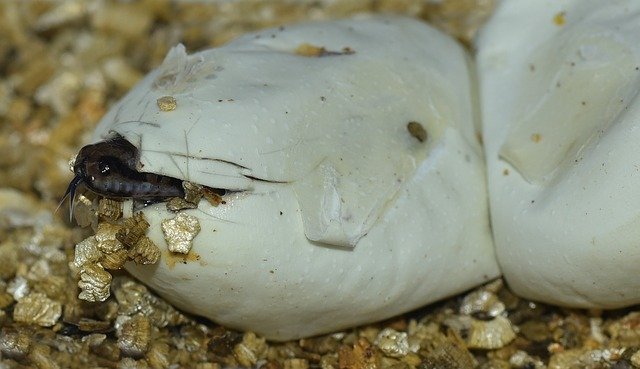What Types of Snakes Give Live Birth?
November 17, 2020

Do Snakes Give Live Birth Or Lay Eggs?
A common misconception is that all snakes lay their eggs in a dark place and then slither off, leaving them and continuing on with their lives. That's just not true. Some species of snakes do lay their eggs in a den and then leave them, but not all snakes do. Others retain their eggs inside of their bodies until they are ready to hatch, and some don’t have eggs at all!
What Snakes Give Live Birth?
Boa constrictors, anacondas, garter snakes, rattlesnakes, and most sea snakes are all snakes that give live birth.

Boa constrictors and anacondas incubate their eggs inside of their bodies before giving birth. One female boa constrictor can give birth to up to 60 babies! These babies will be born around 2 feet long, and will continue to grow throughout their entire lives.
Another good example of live bearing snakes are sea snakes. Because it is impossible to properly incubate eggs underwater, almost all sea snakes have evolved to give live birth. In fact, the only sea snake that lays eggs instead of giving live birth is the sea krait.
Although most colubrids lay eggs, garter snakes are also known to give live birth. They typically give birth to between 8 and 40 live young. At birth, garter snakes are between 6 and 8 inches long.
How do Snakes Give Live Birth?
Snakes give live birth no differently than people do. The babies will share nutrients with their mother through the yolk sack and placenta, and when they're fully developed, they will be born alive in a membrane. Typically at this point, the mother will leave the babies to fend for themselves.

The Difference Between Oviparous, Ovoviviparous, and Viviparous
There are three different types of subcategories for snakes giving birth. These subcategories are oviparous, ovoviviparous, and viviparous. Oviparous snakes are snakes that lay their eggs outside of their bodies in dens. This is what is most commonly pictured when people think of snakes bearing young. Some examples of oviparous snakes are ball pythons and corn snakes. Ovoviviparous snakes keep their eggs inside of their bodies to incubate them. The offspring will get their nutrients from the egg that they are in, not directly from their mother. The babies will emerge when they hatch inside of their mother. Vipers such as copperheads and rattlesnakes are a good example of ovoviviparous snakes. Viviparous snakes develop their offspring internally, sharing nutrients with their babies directly through the placenta. When the babies are fully developed the mothers will give live birth.
Why Do Some Snakes Lay Eggs While Others Give Live Birth?
The method of reproduction that a snake uses is ultimately determined by survival rate and evolution. Snakes that are in colder environments are typically ovoviviparous or viviparous. This is because it is easier for the snake to keep their young warm inside of them, than it would be to safely incubate external eggs. Carrying their babies around with them also helps increase survival rate, as no eggs are left unattended to be found by predators.




Sending...